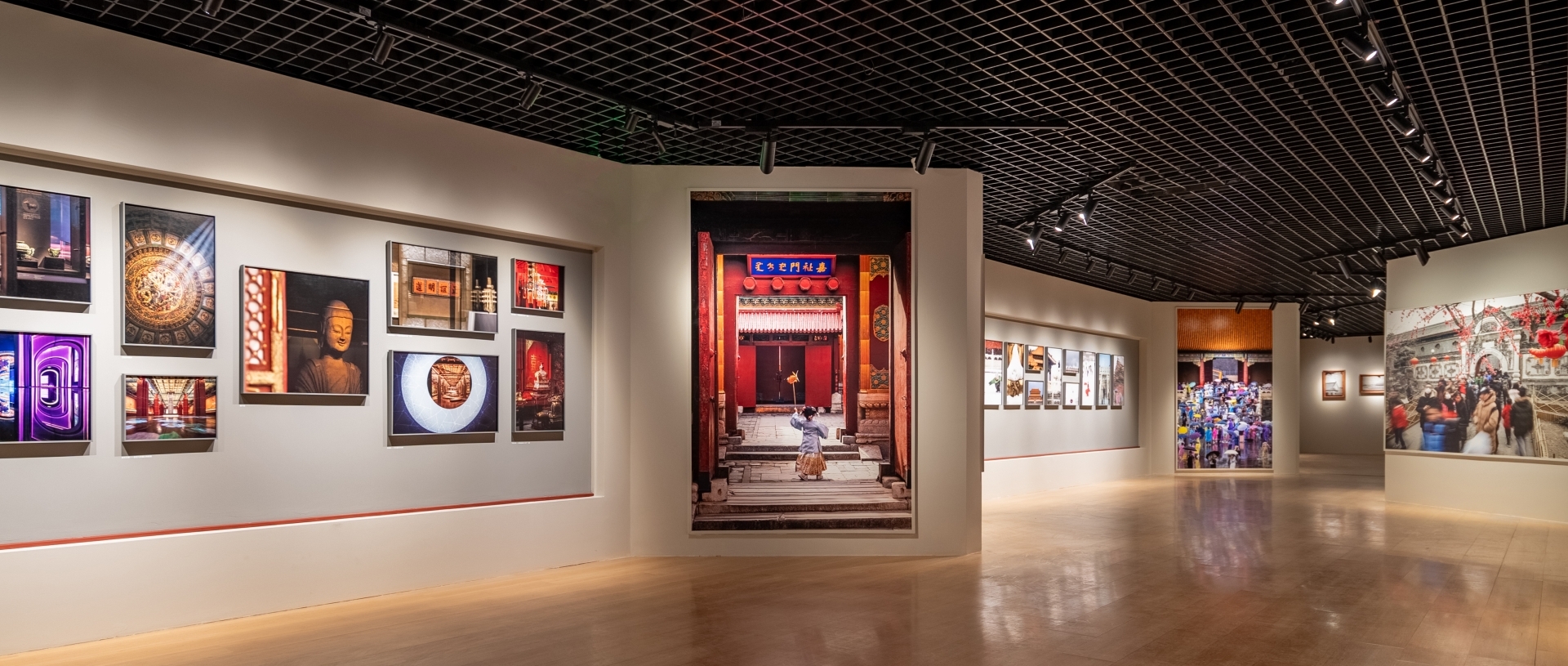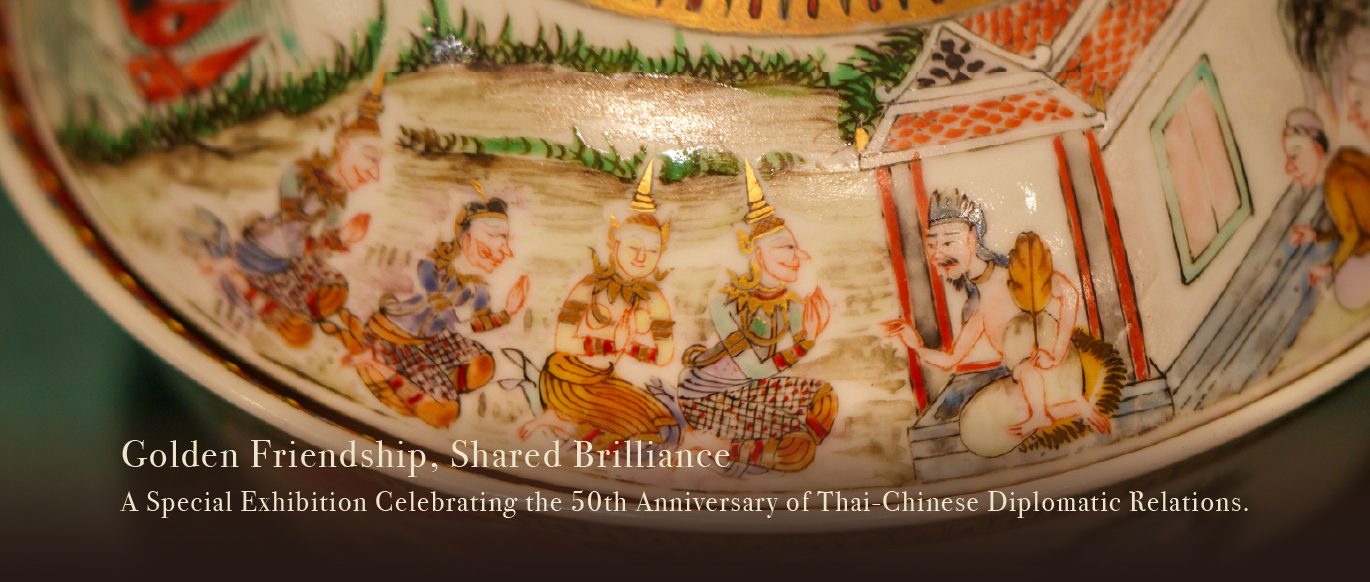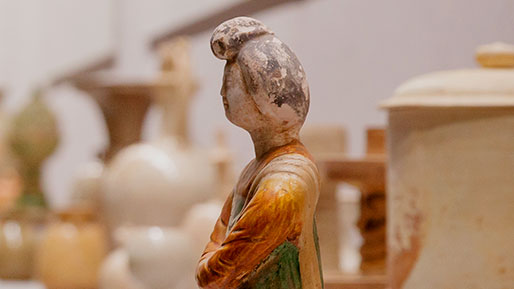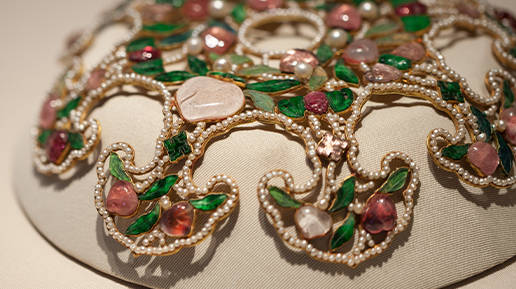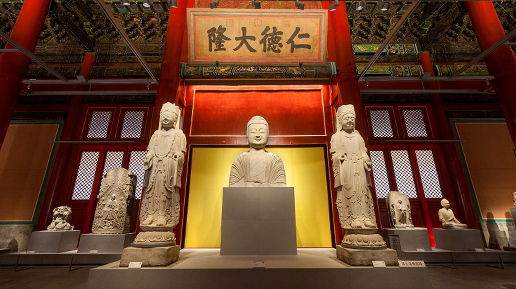
In celebration of the most magnificent of all traditional Chinese holidays, the Palace Museum presents “Celebrating the Spring Festival in the Forbidden City” from 6 January through 7 April 2019 in the galleries atop the Meridian Gate (Wu men).
Known in China as Spring Festival (Chun jie), the holiday is recognized around the world as Chinese New Year. According to the Chinese lunar calendar, each lunar year begins sometime from late-January to late-February of the solar year. 2019 is the Year of the Boar (Zhu nian) or the jihai year. This exhibition will begin on the first day of the last lunar month and end on Double Third Festival (Shangsi jie). The Palace Museum’s Director Shan Jixiang noted that, while Chinese people have typically returned home for the annual celebration, in recent years many have spent part of their holiday vacation visiting museums.
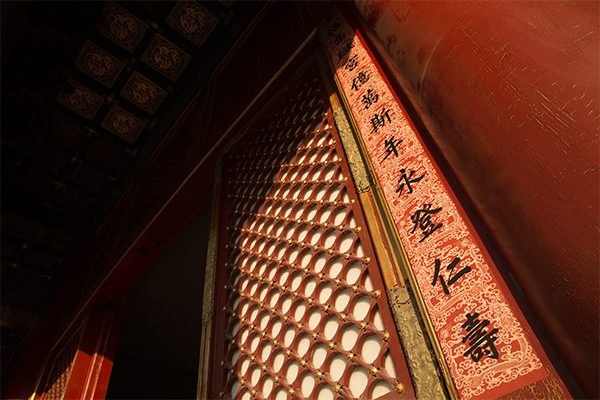
This exhibition presents the holiday theme with a showcase of historical art in the Meridian Gate’s central and wing galleries and with festive décor throughout the Forbidden City. The gallery displays include works from the Palace Museum, First Historical Archives, Shenyang Palace Museum, Capital Museum, and Temple of Heaven Park. Meanwhile, the visiting areas of the Forbidden City are transformed into a Spring Festival cultural experience with auspicious poetic couplets (duilian or chunlian) and images of guardian gods (menshen, lit. “gate god”) on the doors of palace halls, lanterns placed throughout porticos, and heavenly lanterns (tiandeng) and longevity lanterns (wanshou deng) at the Palace of Heavenly Purity (Qianqing gong) and Hall of Imperial Supremacy (Huangji dian). The thematic décor presents traditional Chinese approaches to the holiday with additional highlights of Manchu idiosyncrasies as developed during the Qing dynasty (1644–1911). The exhibition is presented in six sections introducing the historical celebrations.
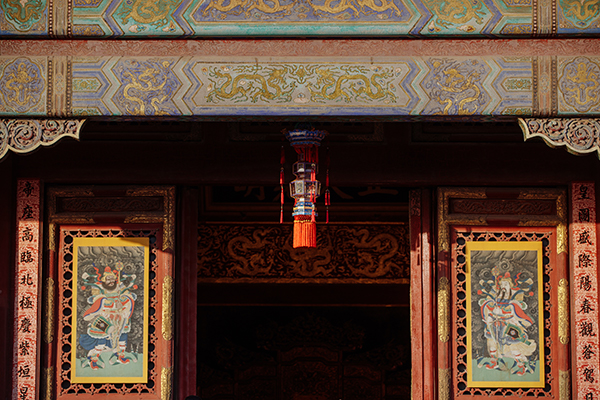
Spring Festival at the Qing Palace
I. Auspicious Invocation
This first section presents such indispensable features of Spring Festival as “blessing” characters (fu), poetic couplets, pairs of guardian gods on doors, and other auspicious decorations intended as prayers for good fortune throughout the year. Paintings for the new year (suichao tu), heavenly lanterns, longevity lanterns, and ornamental lanterns reflect unique characteristics of the imperial court. These and other items express the traditional beliefs of driving off evil spirits, praying for blessings, and other wishes. On view are works of imperial calligraphy in the form of “blessing” characters (fu) by the Kangxi (1662–1722), Yongzheng (1723–1735), Qianlong (1736–1795), Jiaqing (1796–1820), and Daoguang (1821–1850) emperors.
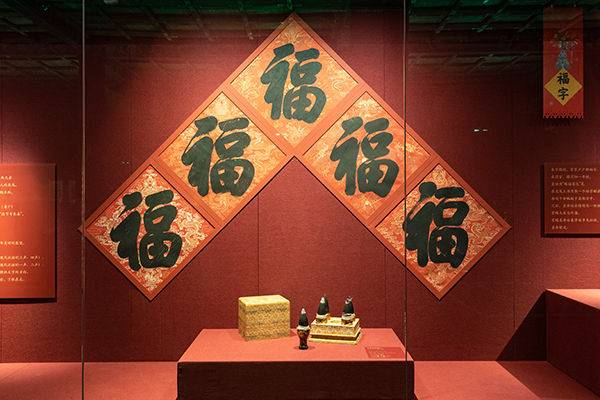
II. Filial Sacrifice
During Spring Festival, families throughout China present offerings and sacrifices to their ancestors in the most solemn and important of traditional ceremonies. These rites are a way of remembering the virtues of departed loved ones and promoting filial piety. This section provides a rare look at the spirit tablets (shenzhu) of the Kangxi, Yongzheng, and Qianlong emperors used in the imperial ancestral sacrifices of the Qing dynasty. Additionally, the fasting and abstinence pendants (zhaijie pai) used during the preparation period for imperial sacrifices display the exquisite work of the period’s artisans.
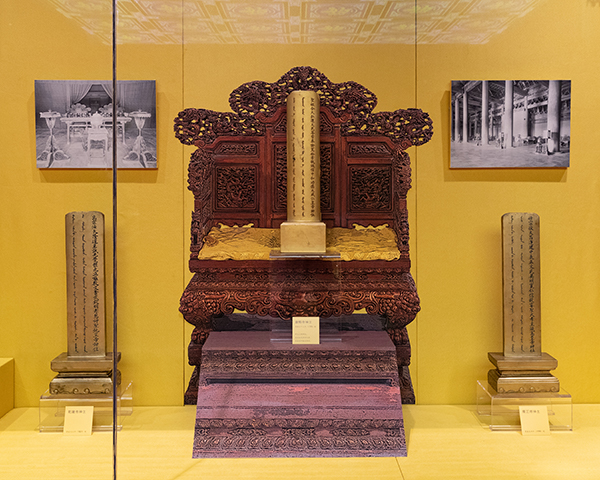
III. Imperial Kinship
The Spring Festival is a time of family reunion during which the annual festive banquet is shared in homes throughout China. This section introduces the opulent feasts of the imperial clan as shared by the emperor with empress, concubines, and members of the imperial clan, respectively. Designed in accordance with the imperial culinary archives of 1783 (the forty-eighth year of Qianlong), the exhibition presents historically accurate displays of the imperial feast.
IV. Diligent Governance
Throughout China’s dynastic history, the emperor’s every moment was of great pertinence to the affairs of state. Although the court held an annual ceremony to put away the imperial seals (fengyin yishi, lit. “Seal Closing Ceremony”) as a way of nominally commencing a period of repose, the emperor was never truly free from his duties. This fourth section of the exhibition includes a gallery-display of the Opening Brush Ceremony (Mingchuang kaibi) in which the emperor wrote for the first time in the new year in the east warm chamber of the Hall of Mental Cultivation (Yangxin dian) and a rare presentation of a national treasure called “Eternal Territorial Integrity Cup” (Jinou yonggu)—a gold goblet with jewel inlays. During the ceremony, the emperor would write an auspicious message to invoke blessings for his dominion. In dynastic times, these messages—once sealed away in yellow boxes, which were never intended to be reopened—are now on view. Additionally, this section shows some of the eighteen instruments of the harmonious musical ensemble used in the grand Spring Festival ceremonies at the Hall of Supreme Harmony (Taihe dian) in which the princes, dukes, and ministers bowed before the emperor and at the Palace of Heavenly Purity (Qianqing gong) in which the imperial family bowed before the emperor.
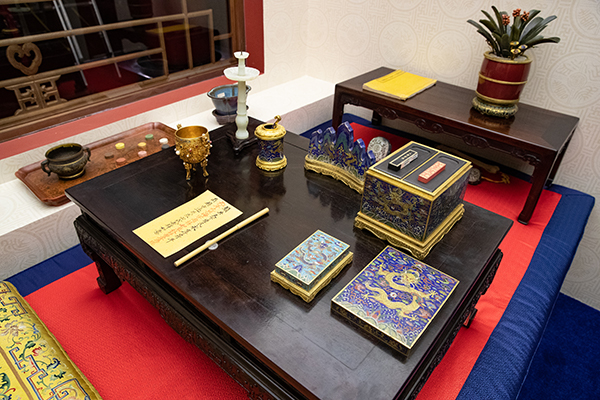
V. Winter Recreation
This section showcases various activities during the winter months as enjoyed by the imperial establishment. Works on view include Amusements on Ice (Bingxi tu), which shows outdoors recreation on the three lakes collectively known as the Pools of the Supreme Fluid (Taiye chi)—namely, North Lake (Bei hai), Central Lake (Zhong hai), and South Lake (Nan hai)—located to the west of the Forbidden City. During the cold of winter, youths of the Eight Banners would perform acrobatics, sword dances, and other feats while ice skating. Indoors, the imperial family typically enjoyed operas at this time of year. The exhibition includes displays of costumes, stages, scripts, backgrounds, and other theatrical accoutrements.
VI. Universal Delights
While the five previous sections are presentations of various items in the exhibition galleries, this sixth section shows the splendor of the festival with decorative displays throughout the Forbidden City. The décor includes paintings and poetic couplets on doors, lanterns in palatial porticos, longevity lanterns, and heavenly lanterns.
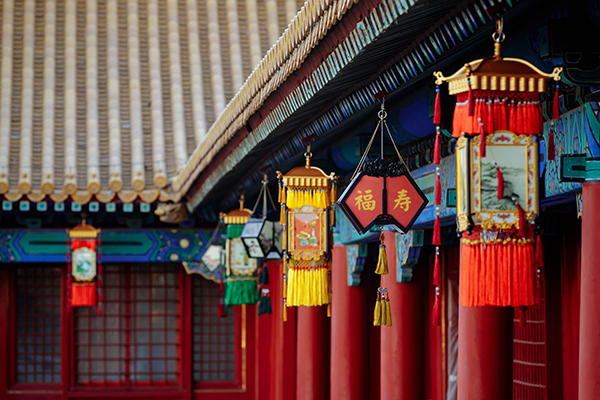
Heavenly Lanterns and Longevity Lanterns
The lanterns presented in this special exhibition for Spring Festival were designed in accordance with historical archives from the Qing dynasty. During that period, the installation and dismantling of Spring Festival lanterns required the work of over 8,000 personnel. In 1822 (the twentieth year of Daoguang), the emperor’s austerity ended almost 200 years of traditional lantern decorations; as a result, the original lanterns were lost. Nevertheless, researchers have recovered details of the historical lanterns from archives, paintings, and other sources. The heavenly lanterns and longevity lanterns displayed in the Forbidden City are historically accurate reconstructions.
The exhibition brings historical art to life in three distinct ways. First, the galleries are organized with works from different categories shown together and in period displays of interior décor. With presentations involving video, music, incense, and infrared-response, the galleries create a multisensory experience for visitors. The west-wing gallery atop the Meridian Gate also features an activity in which visitors can impress vermillion seals. Additionally, the east-wing gallery is outfitted with a large background of The Qianlong Emperor at Leisure during the Spring Festival (Qianlong di suichao xinglu tu) for visitors to take pictures. More interactive displays can be found in the east side-gallery of the Palace of Heavenly Purity (Qianqing gong).
Historic Innovation
“Celebrating the Spring Festival in the Forbidden City” is an historic exhibition for two main reasons. With well over 700 works, the galleries hold the largest quantity of art in the largest exhibition area for a single exhibition in the Museum’s history. The expansive galleries and thematic décor throughout the visiting areas of the imperial palace involve an unprecedented use of space and artwork. In addition to these two milestones, the east side-gallery of the Palace of Heavenly Purity (Qianqing gong) features an immersive digital experience with virtual reality, motion capture, and other interactive technologies.
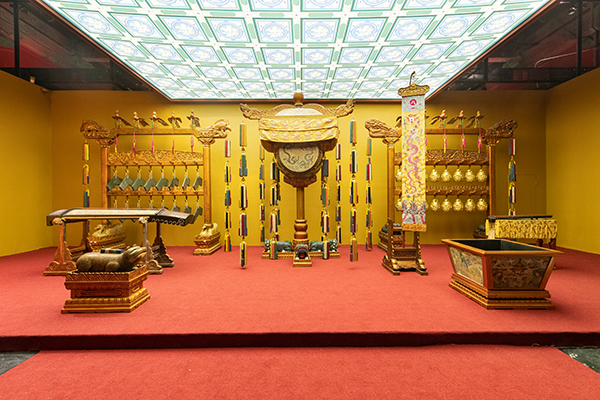
Commemorative Products
While enjoying the exhibition and festive décor, visitors may also purchase a variety of memorabilia, toys, stationary, household decorations, tea ware, phone accessories, and authentic reproductions related to the Spring Festival theme at the Museum’s shops. After leaving the Forbidden City, visitors may order a variety of products with the exhibition’s theme from the Industrial and Commercial Bank of China (Zhongguo Gongshang yinhang), the Museum’s exclusive partner for the promotion of this exhibition. Products on offer include Museum-themed credit cards, certificates of deposit, and red envelopes.
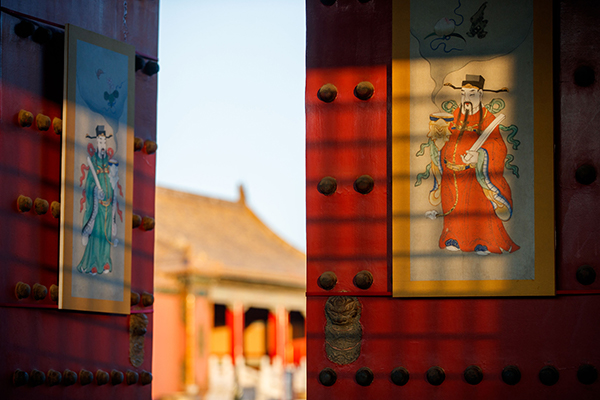

Translated and edited by Adam J. Ensign and Zhuang Ying



